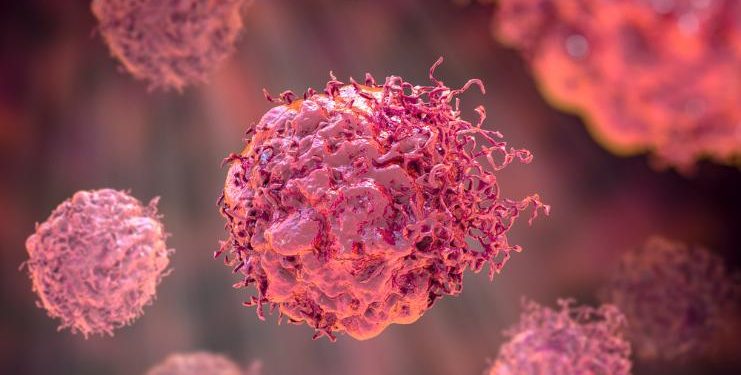Stage 4 Cancer treatment is usually intended to control the disease, relieve symptoms and improve a person’s quality of life. It depends on what type of cancer a person has and how far it has spread.
Cancer that has spread to distant sections of the body is called metastatic cancer. It is usually diagnosed years after the original cancer diagnosis and after the primary cancer has been treated or eliminated.
Chemotherapy
When cancer spreads to other parts of the body, it’s called metastasis. If it reaches stage 4, it’s likely the cancer has already spread to several locations. Stage 4 cancer is usually not cured, but treatment can help relieve symptoms and extend survival.
Chemotherapy uses drugs to kill cancer cells. This type of treatment can be given on its own or with other cancer treatments. It is usually given over time, with breaks between treatments that let your body’s normal cells heal. Each treatment cycle is 3 weeks or more, and it may last for months.
Some chemotherapy drugs can cause side effects such as nausea and tiredness. You can ask your doctor about anti-nausea medicine, which helps most people. Chemotherapy can also reduce your white blood cell counts, which can make it harder for your body to fight infections.
Your doctor can use blood tests and X-rays to see how well your chemotherapy is working. If the levels of certain types of blood cells drop too low, your doctor will change your dose or stop the treatment for a few days.
There are some types of chemotherapy that target specific mutations in cancer cells. This type of chemotherapy is called targeted therapy. It is often combined with other cancer treatments, such as radiation or surgery.
Other cancers can be treated with immunotherapy, which uses your body’s natural immune system to fight the tumor. It is often used as part of a combination therapy for Stage 4 Cancer.
You and your doctor can find out if you qualify for cancer clinical trials. These studies compare different treatments and see how well they work on large groups of people. They can also help find the best treatment for you.
Palliative care is a type of healthcare that can help ease pain, stress and other symptoms caused by the cancer and its treatment. This type of care can be provided by a team of health professionals, such as social workers and nurse practitioners. Your doctor can also refer you to specialists in managing side effects of cancer treatment.
Radiation therapy
Radiation is a powerful form of energy that can kill cancer cells and keep them from growing. However, healthy cells that surround tumors can also be affected by high doses of radiation. This is why doctors use special techniques to limit the amount of radiation that goes to normal tissue.
Radiations are usually delivered daily for several weeks in a treatment room. Before starting your treatments, you’ll receive a CT scan or MRI to identify the location of your tumor and surrounding tissue. This information helps your doctor create a customized radiation plan that targets the area most likely to contain cancer cells.
During radiation therapy, you lie on a table and the radiation machine (linear accelerator, or linac) makes a buzzing sound. Your treatment team will remain in another room, but they can communicate with you through a window or closed-circuit TV. If you’re uncomfortable, let your team know and they can make changes.
Fatigue is a common side effect of radiation. This fatigue may get worse over time and can interfere with your work, social life and personal relationships. Your oncologist can offer strategies to help you manage fatigue and prevent it from interfering with your daily activities.
A tumor in the lungs can cause difficulty breathing. In some cases, a doctor can use radiation to shrink a lung tumor and improve breathing. They can also perform a procedure called a bronchoscopy to open blocked lung passages and clear obstructions.
Prostate cancer is the most common form of cancer in men. If a prostate tumor becomes advanced, it can spread to other parts of the body. Radiation can reduce the size of a tumor and reduce symptoms like pain and urgency to urinate.
A type of radiation, permanent implant or brachytherapy, involves placing radioactive material directly into the cancer or surrounding tissue. This type of radiation may be given through a needle, through a tube called a catheter or through a special applicator that’s placed on the surface of the skin. Radiation from permanent implants stays inside the body for a longer period of time.
Surgery
Surgery can be used to remove the cancer, and in some cases to help relieve pain, symptoms or other health problems caused by the disease. Surgery can also be used to prevent the cancer from spreading.
Cancer that has spread to distant parts of the body is called stage 4. This is sometimes referred to as metastatic cancer.
The stage of the cancer describes how far it has spread, and it helps doctors plan treatment. The stage is determined by the size and location of the tumor, and whether or not it has spread to nearby tissues or organs. The stage is also determined by the type of cancer, how it responds to treatment and a person’s overall health.
Staging is done to help doctors determine the best treatment for each patient. The staging system is based on the TNM (tumor, nodes and metastasis) classification from the American Joint Committee on Cancer. The T part of the system identifies the size and location of the tumor, while the N portion identifies the number of lymph nodes that have been affected by the tumor. The M part of the system indicates whether or not the cancer has spread to other organs, and it is also rated on a scale from 1 to 4.
If the surgeon discovers that the tumor has not spread beyond the lung, they will often recommend surgery to remove the cancerous tissue and relieve symptoms and improve quality of life. If the cancer has spread to other parts of the body, it will be removed surgically and then treated with chemotherapy, radiation or targeted therapy.
Once a person is under anesthesia, the surgeon removes the tumor and some of the healthy tissue around it. They may also take samples of the tissue surrounding the tumor for further testing. These samples will be checked under a microscope to see if any of the cancer cells have spread.
After surgery, patients will go to a room where nurses will monitor them closely for several hours. The nurses will give you pain relievers if necessary. They will answer any questions you or your family members have. You might feel groggy, confused or chilly after waking up from the anesthesia. It is important to have good communication with your medical team, and to talk openly about your feelings.
Targeted therapy
Some cancers are very hard to treat, but doctors continue to find ways to improve survival rates. One of these newer treatments is called targeted therapy, which uses drugs to stop tumor growth and kill cancer cells. It targets specific things inside your cells that help cancer grow and spread, so it may not harm healthy cells as much as traditional chemotherapy.
Targeted therapy can be used alone or with other types of treatment. It may be given as pills you swallow (orally) or by a needle into your vein (intravenously). You might also receive it through your skin in the form of a cream, or it might be delivered via catheter into a blood vessel in your chest (chest port). Targeted therapy is usually long-term and will require regular testing to make sure it’s still working.
There are many different targeted therapies available to treat stage 4 cancers. Some of them work by stopping cancer cells from getting the nutrients they need to grow. These drugs are called angiogenesis inhibitors. Other targeted therapies work by interfering with the chemical signals that cancer cells use to tell themselves when to grow and spread. This type of targeted therapy is called signal transduction inhibitors.
Other targeted therapies target proteins that are part of the cellular machinery that controls how genes get expressed, or turned on and off. These types of drugs are called gene expression modulators. Finally, there are a few targeted therapies that cause cancer cells to die naturally by triggering the process of cell death, or apoptosis. Examples of these include bortezomib (Velcade), a drug that treats lymphoma and multiple myeloma, and plant compounds like resveratrol.
Like other cancer treatments, targeted therapy can cause side effects. These might include a rash that looks like acne, diarrhea, and problems with your liver or blood vessels. Your doctor can help you manage these side effects. Some targeted therapies aren’t approved for all types of cancer, and some may not be safe to use if you’re pregnant or breastfeeding. However, you might be able to try an experimental targeted therapy through a clinical trial.









